Go Polarized: What are the Benefits of Polarized Safety Glasses?
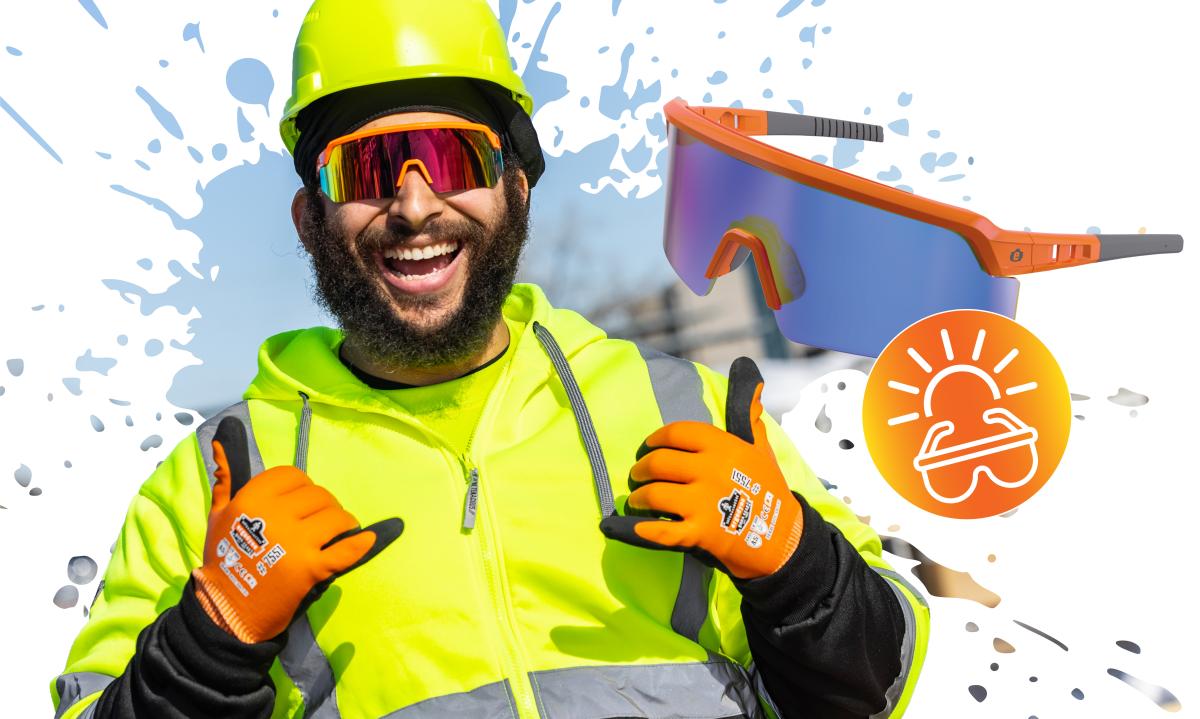
Prioritizing clear vision and comfort isn’t just a luxury—it’s a critical part of maintaining a safe and productive work environment. For those working outside in bright, reflective conditions, having polarized protection is not only a 'nice-to-have', but it's down right essential.
What Are Polarized Lenses?
Polarized lenses are designed to protect your eyes by cutting through glare and blocking out horizontal light waves that can cause strain. Whether you're hard at work or enjoying the great outdoors, polarized sunglasses enhance both comfort and safety.
By reducing eye fatigue and ensuring clearer vision, they help prevent eye-related injuries and minimize the risks associated with obstructed or strained vision—especially in high-stakes environments like job sites.
How Do Polarized Sunglasses Work?
As the American Academy of Ophthalmology explains, it’s not just a gimmick—there's actual science at play when it comes to the makeup of polarized safety glasses’ lenses. During manufacturing, hydrocarbons are combined into a thin film of polyvinyl acetate (PVA) and are then applied to the lenses, creating a molecular structure that blocks horizontal light rays (the ones that cause all that annoying glare).
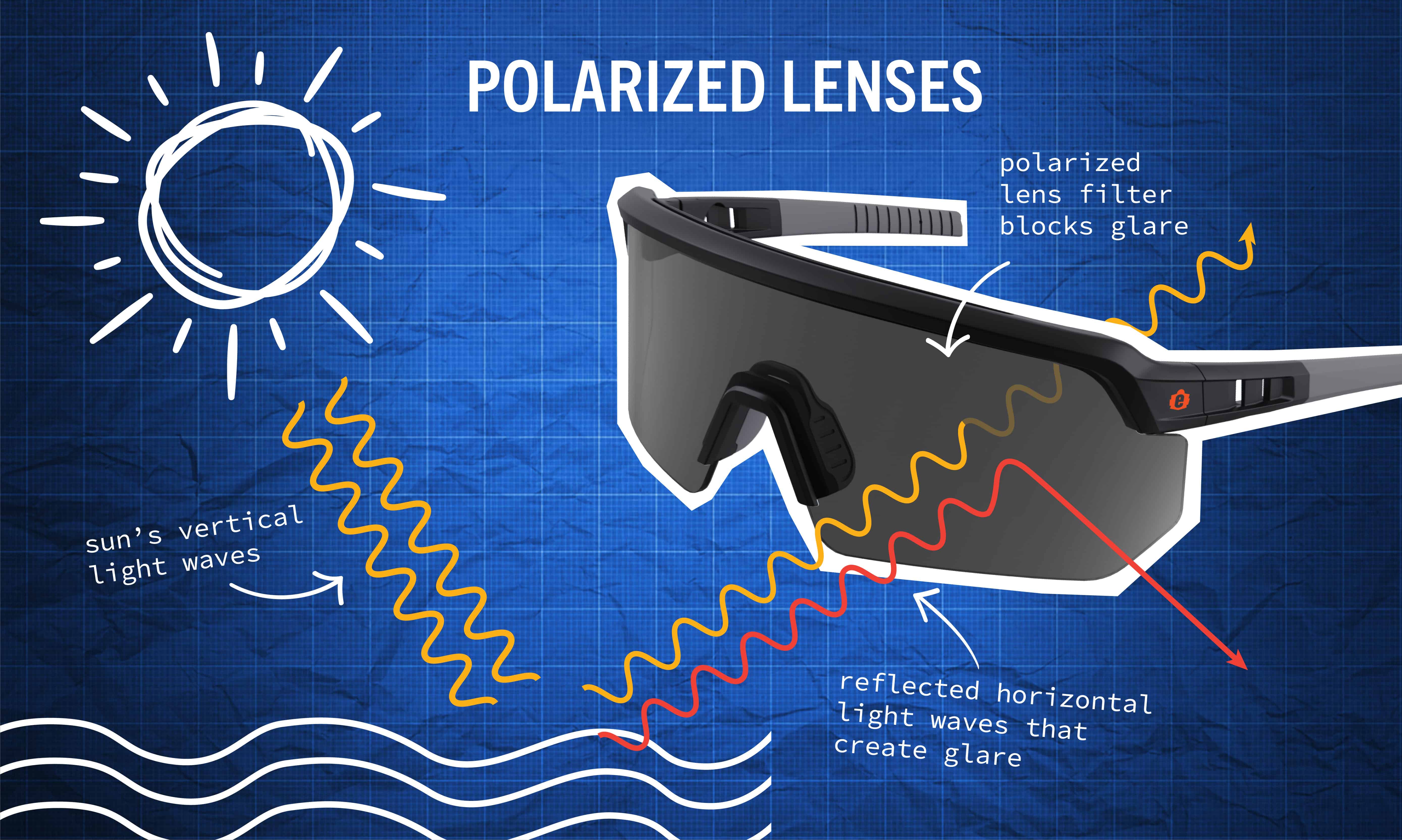
At the same time, these lenses allow vertical light to pass through, giving you the perfect balance of clarity and comfort. So yes, it's not just a fancy coating; it's carefully engineered technology designed to make your eyes a whole lot happier.
What’s the Difference Between Polarized and Non-Polarized Sunglasses?
As discussed above, polarized sunglasses work by blocking horizontal light rays, which, as anyone who's ever squinted through glare knows, can cause eye strain and discomfort. Non-polarized sunglasses? Well, they let in more light, which means you get a brighter view—but also more of that pesky glare.
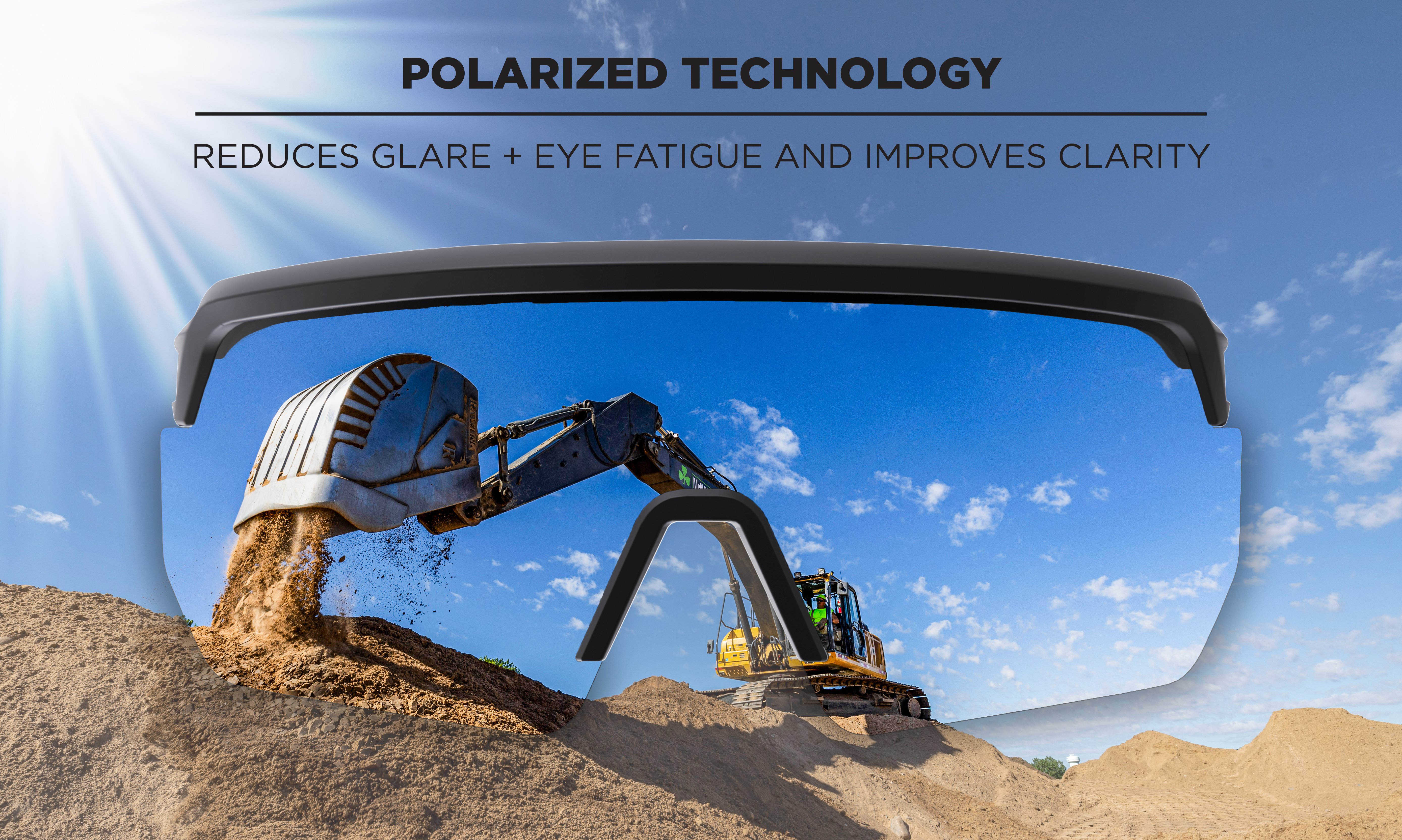
According to Texas A&M’s research study, polarized lenses provide the added bonus of reduced strain, keeping your eyes more comfortable, whether you're basking in the sun or working outdoors. But, there is a time and a place for both polarized and unpolarized lenses, depending on your environment and the protection you need from the safety glasses being worn.
When to Wear What: Polarized vs. Non-Polarized:
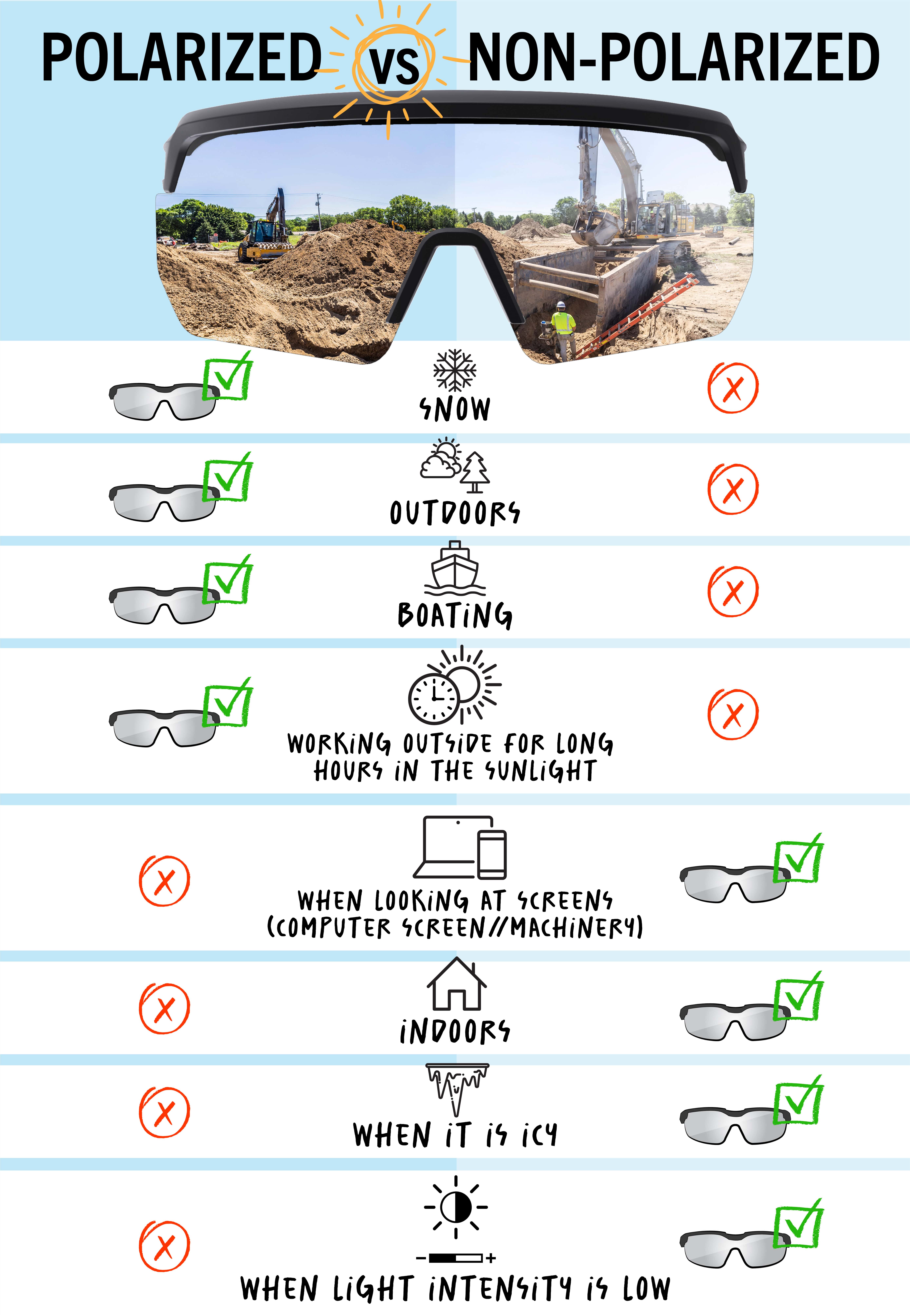
What’s the Difference: UV Protection vs. Polarized
It's important to understand that UV protection and polarization are not the same thing, despite what some might suggest. UV-blocking lenses are designed to shield your eyes from harmful ultraviolet rays, while polarized lenses specifically target glare by filtering out horizontally reflected light waves.
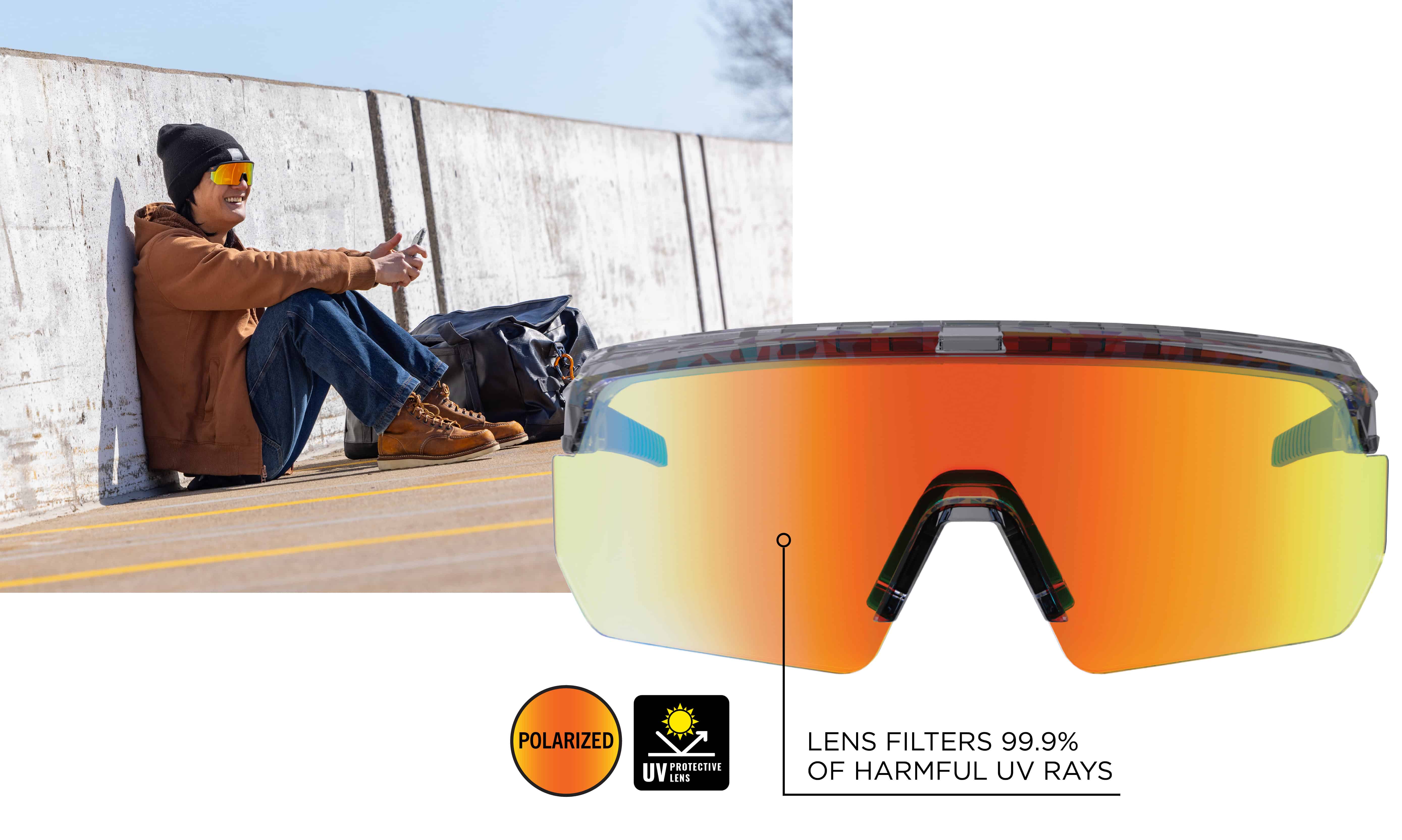
Of course, many polarized lenses do include UV protection, but just because your lenses are polarized doesn't automatically mean they're blocking UV rays, and vice versa. So, if you’re looking for both benefits, it’s a good idea to check the packaging carefully—because, apparently, not all "protective" lenses are created equal.
Made to Your Specs // Ergodyne Skullerz Polarized Safety Glasses
Ergodyne’s impressive collection of polarized sunglasses provides practical solutions to the all-too-common problem of eye strain from spending endless hours under the relentless sun.

Crafted with durable frames and impact-resistant polarized lenses, these sunglasses are treated during the manufacturing process for added resilience anti-glare benefits. With built-in UV protection and a non-slip design, these glasses promise to keep you shielded from the harsh elements overhead and say goodbye to annoying eye pain.

